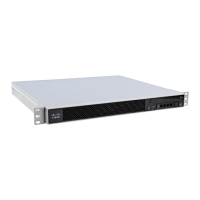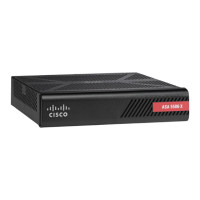1-44
Cisco ASA Series CLI Configuration Guide
Chapter 1 Configuring a Cluster of ASAs
Configuring ASA Clustering
• Prerequisites, page 1-44
• Enabling the Cluster Control Link Interface, page 1-44
• Configuring Bootstrap Settings and Joining the Cluster, page 1-45
• Examples, page 1-47
Prerequisites
• You must use the console port to enable or disable clustering. You cannot use Telnet or SSH.
• Back up your configurations in case you later want to leave the cluster, and need to restore your
configuration.
• For multiple context mode, complete this procedure in the system execution space. To change from
the context to the system execution space, enter the changeto system command.
• We recommend enabling jumbo frame reservation for use with the cluster control link. See the
“Enabling Jumbo Frame Support (Supported Models)” section on page 1-33.
• If you have any interfaces in your configuration that have not been configured for clustering (for
example, the default configuration Management 0/0 interface), you can join the cluster as a slave
unit (with no possibility of becoming the master in a current election).
• When you add a unit to a running cluster, you may see temporary, limited packet/connection drops;
this is expected behavior.
Enabling the Cluster Control Link Interface
Configure the same cluster control link interface as you configured for the master unit. See the “Enabling
the Cluster Control Link Interface” section on page 1-38.
Detailed Steps—Single Interface
Command Purpose
Step 1
interface interface_id
Example:
hostname(config)# interface
tengigabitethernet 0/6
Enters interface configuration mode.
Step 2
no shutdown
Example:
hostname(config-if)# no shutdown
Enables the interface. You only need to enable the interface; do
not configure a name for the interface, or any other parameters.

